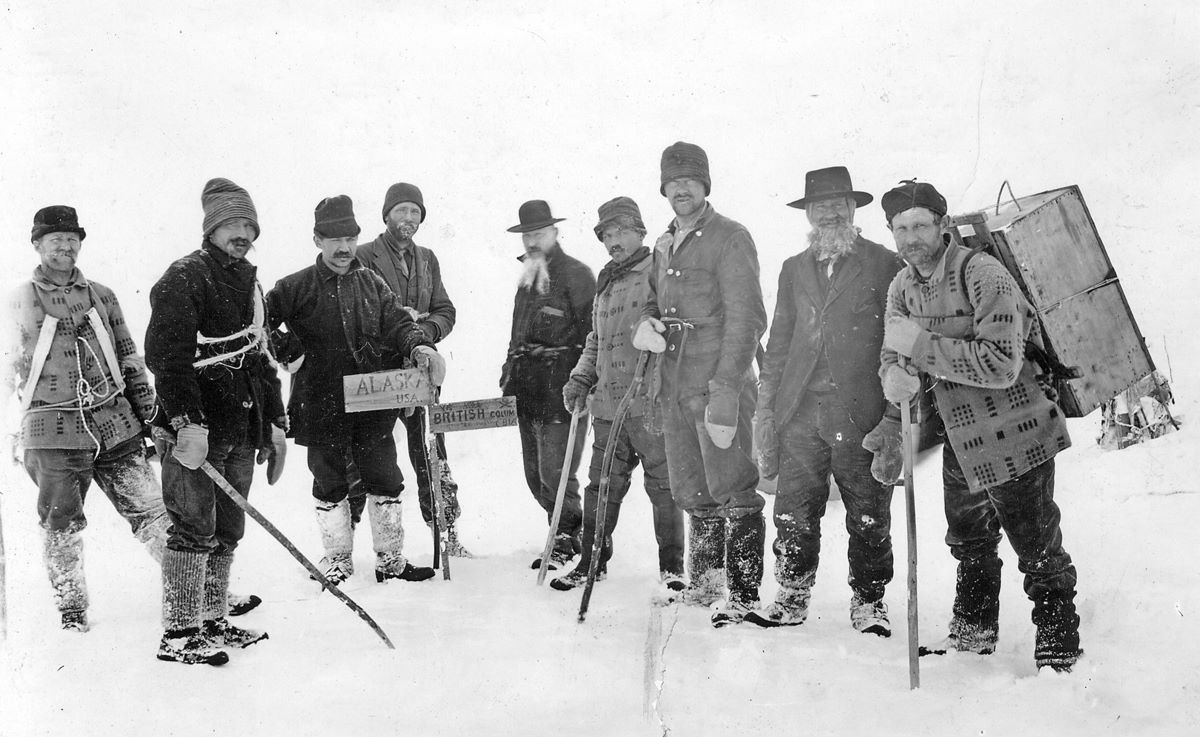Hidden Mining Camps Of Alaska’s Klondike Gold Rush

Ever wondered what life was like during the Klondike Gold Rush? Alaska's hidden mining camps hold the secrets to this thrilling chapter of history. These camps, often tucked away in remote areas, were bustling hubs of activity where prospectors chased their dreams of striking it rich. Imagine the rugged landscapes, the makeshift shelters, and the camaraderie among miners. Visiting these sites today offers a unique glimpse into the past. You can walk the same paths, see the remnants of old equipment, and feel the spirit of adventure that drove thousands to these lands. Ready to step back in time and explore the hidden mining camps of Alaska's Klondike Gold Rush? Let's go!
Hidden Mining Camps of Alaska's Klondike Gold Rush
The Klondike Gold Rush was a time of adventure, hardship, and dreams of striking it rich. While many know about the famous spots, some hidden mining camps played a crucial role in this historic event. Let's uncover these lesser-known gems.
1. Dyea
Dyea, once a bustling town, now lies in ruins. It served as a gateway for prospectors heading to the Klondike. Today, remnants of the past whisper stories of ambition and struggle.
- Chilkoot Trail: This historic trail starts in Dyea and was the main route for gold seekers. Hikers can still follow in the footsteps of those early adventurers.
- Slide Cemetery: A somber reminder of the dangers faced by prospectors, this cemetery holds the graves of those who perished in an avalanche in 1898.
2. Skagway
Skagway, another key entry point, thrived during the gold rush. Its hidden camps and trails offer a glimpse into the lives of those who sought fortune.
- White Pass Trail: Known as the "Dead Horse Trail," this path was treacherous for both men and animals. Evidence of the hardships faced can still be seen along the trail.
- Liarsville: Named for the journalists who fabricated stories of gold, this camp has been preserved as a historical site. Visitors can explore the recreated buildings and learn about the town's colorful past.
3. Bennett
Bennett, located on the shores of Lake Bennett, was a crucial stop for prospectors. It served as a staging area before the final push to the goldfields.
- Bennett Lake: This serene lake was once filled with makeshift boats and rafts built by gold seekers. Today, it's a peaceful spot for reflection.
- Bennett Train Station: The old train station stands as a testament to the town's importance during the gold rush. It's a popular stop for tourists traveling the White Pass and Yukon Route Railroad.
4. Dawson City
Dawson City, the heart of the Klondike Gold Rush, still retains much of its historic charm. Hidden camps around the city reveal the untold stories of those who lived and worked there.
- Bonanza Creek: The site of the first major gold discovery, this creek is dotted with abandoned mining equipment and cabins. It's a must-visit for history buffs.
- Dredge No. 4: This massive dredge, once used to extract gold from the riverbed, is now a national historic site. Tours offer a fascinating look at the technology of the time.
5. Forty Mile
Forty Mile, one of the earliest gold rush towns, predates the Klondike rush. Its hidden camps and relics provide a unique perspective on the early days of gold prospecting.
- Forty Mile River: This river was a lifeline for early prospectors. Canoeing or kayaking down its waters offers a sense of the challenges faced by those first adventurers.
- Old Fort Reliance: Built by the Hudson's Bay Company, this fort served as a trading post and refuge. Its ruins tell tales of trade, survival, and exploration.
6. Eagle
Eagle, a small town on the Yukon River, played a significant role during the gold rush. Its hidden camps and historic sites offer a window into the past.
- Fort Egbert: Established to maintain order during the gold rush, this fort now stands as a reminder of the military's role in the region. Visitors can explore the restored buildings and learn about the soldiers stationed there.
- Eagle Historic District: The entire town is a historic district, with many buildings dating back to the gold rush era. Walking through Eagle feels like stepping back in time.
7. Circle City
Circle City, once known as the "Paris of Alaska," was a vibrant hub during the gold rush. Its hidden camps and historic sites reveal a rich history.
- Circle Hot Springs: These natural hot springs provided a welcome respite for weary prospectors. Today, visitors can soak in the warm waters and imagine the stories of those who came before.
- Circle City Historic District: The remnants of old buildings and mining equipment offer a glimpse into the town's bustling past. Exploring this area is like uncovering a time capsule from the gold rush era.
Discovering Alaska's Hidden Mining Camps
Exploring Alaska's hidden mining camps offers a unique glimpse into the past. These sites, remnants of the Klondike Gold Rush, tell stories of adventure, hardship, and dreams of fortune. Visiting these camps, you can almost hear the echoes of miners' picks and shovels. The rugged landscapes and preserved artifacts make history come alive.
Whether you're a history buff or just love the outdoors, these hidden gems provide an unforgettable experience. Hiking through old trails, seeing abandoned equipment, and learning about the lives of those who sought gold here is truly fascinating. It's a chance to connect with a significant part of American history.
So, pack your bags, lace up your hiking boots, and set out to uncover the secrets of Alaska's mining camps. You'll leave with a deeper appreciation for the resilience and determination of the gold rush pioneers.

